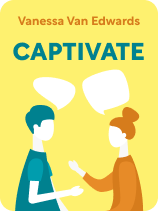

This article is an excerpt from the Shortform book guide to "Captivate" by Vanessa Van Edwards. Shortform has the world's best summaries and analyses of books you should be reading.
Like this article? Sign up for a free trial here.
How can you show support to a person who’s neurotic? How can you effectively work alongside someone who isn’t very open?
Vanessa Van Edwards aims to help you connect more comfortably with others and build deeper relationships. In this context, she examines how to identify and cater to people’s personality traits so you can communicate with them as effectively as possible.
Continue reading to learn how to read someone’s personality and use that knowledge to navigate your relationship.
Identify and Play to People’s Personality Traits
Van Edwards presents the psychological trait theory that every person has five core personality traits and embodies more or less of each trait:
- Openness
- Conscientiousness
- Extroversion
- Agreeableness
- Neuroticism
She argues that you can’t change and shouldn’t judge these traits, which influence how people operate and are likely to respond in different situations. She recommends that you instead accept people’s traits and adjust your behavior to adapt to them, which will allow you to either work with or around them in challenging situations.
| Different Takes on Personality Traits Some assert that the “Big Five” personality trait model that Van Edwards uses is the most scientifically valid and reliable, having been researched and used extensively by psychologists. However, others praise Thomas Erikson’s four-color DISC model as also scientifically valid, easy to understand, and more practically applicable than the Big Five model because of the more general insights it offers. In Surrounded by Idiots, Erikson argues that people’s personality traits fall into one of four color categories—red, yellow, green, and blue—which reflect whether they’re driven by the desire to Dominate, Inspire, be Stable, or Comply, respectively. The characteristics of each trait are as follows: Red: Extroverted, ambitious, confident, thrill-seeking, hard-working, innovative Yellow: Extroverted, optimistic, social, persuasive, entertaining, idealistic Green: Introverted, helpful, easygoing, cooperative, regimented, patient Blue: Introverted, obedient, organized, meticulous, cautious, private Erikson’s DISC model is considered most useful in professional situations where interpersonal behavioral change is important, such as marketing and leadership, while the Big Five is considered better for individual personality assessments and counseling, and less helpful for understanding business, communication, and relationships. |
To identify people’s key personality traits, Van Edwards says you can observe and analyze their body language, how they act, and what they say and write.
The trait of openness reflects a person’s level of curiosity and creativity, as well as their interest in and willingness to try new things. They either prefer novelty or routine. For example, you can intuit that a colleague is more open if she enjoys trying new cuisines without knowing if she’ll like them, as opposed to sticking with tried and true meals over and over. You can cater to a more open personality type at work by encouraging them to tackle new projects that will pique their interest and challenge them.
(Shortform note: In Erikson’s DISC model, this trait would be most closely related to stability. Green and blue personalities crave predictability while red and yellow enjoy new and exciting experiences.)
The trait of conscientiousness reflects a person’s level of discipline, organization, and reliability in managing tasks. They either prefer focusing on details and organizing or having looser structures and doing big-picture thinking. You can deduce that a colleague is more conscientious if everything in her cubicle is neatly organized and has its place, and less conscientious if her papers, books, shoes, and clothes are strewn about. You can play to the strengths of a more conscientious colleague by encouraging them to work on projects and tasks that require attention to detail and accuracy, like compiling lists of resources.
(Shortform note: In the DISC model, this trait would be most closely related to compliance. Blue personalities are the most compliant and detail-oriented, and yellow are the least.)
The trait of extroversion reflects a person’s level of interest in engaging with people and the extent to which that engagement fuels or exhausts them. They either love being with people or need more alone time. You can reasonably guess that your coworker is more extroverted if she’s the life of every party and that she’s less extroverted if she prefers hanging out with a few friends in a quiet park. You can meet the needs of a more extroverted coworker by encouraging them to engage in settings where they’ll have opportunities to interact with lots of people, like industry forums and conferences.
(Shortform note: In the DISC model, this trait would be most closely related to influence. Red and yellow personalities are extroverted, and yellows are the life of the party. Green and blue personalities lean toward introversion with greens preferring small groups and blues preferring solo activities.)
The trait of agreeableness reflects the extent to which a person gets along with and is able to relate to others. They’re either more attuned to others’ experiences or more analytical in their approach to them. You can presume your colleague is more agreeable if, when you ask for her help with a project you’re struggling with, she says yes. You can presume that she’s less agreeable if she gives you her analysis of how you could have done your project differently or better. You can nurture a more agreeable colleague’s tendencies by encouraging them to pursue opportunities that allow them to tap into their ability to connect with others, like being a mentor for new hires.
(Shortform note: In the DISC model, green personalities are the most agreeable. They avoid conflict and are also the most empathetic of the personality types.)
The trait of neuroticism reflects how a person manages and reacts to concerns and problems. They either worry a lot or don’t easily rattle. You can intuit that your colleague is more neurotic if they’re always preparing for the worst-case scenario, and less neurotic if they remain calm in the face of a storm. You can support a more neurotic coworker by asking what their biggest concern is about the project they’re working on, actively listening to their worries, and offering to help them address the challenge they’re facing.
(Shortform note: In the DISC model, blues are the most neurotic. Erikson says that while it might annoy others, pointing out problems is actually a strength of theirs, as it allows the team to fix small problems before they become big ones.)

———End of Preview———
Like what you just read? Read the rest of the world's best book summary and analysis of Vanessa Van Edwards's "Captivate" at Shortform.
Here's what you'll find in our full Captivate summary:
- How socially awkward people can become social superstars
- How to make yourself likable and memorable
- Methods to establish and improve relationships with others






